Ignoring the oddly drawn voltage source and looking just at the passive network with the output at the "top" of the resistor R, what you have here is a high pass shelving filter.
At zero frequency, the capacitor is an open circuit and the circuit is just a resistive voltage divider with a gain of \$\frac{1}{11} \$.
At "infinite" frequency, the capacitor is a short circuit and the output equals the input (the gain is 1).
So, this filter has a lower frequency zero (where the gain starts increasing) and a higher frequency pole (where the gain levels off). In the phasor domain, the transfer function is:
\$\dfrac{V_{out}}{V_{in}} = \dfrac{1}{11}\dfrac{1 + j\omega 10RC}{1 + j \omega \frac{10}{11}RC} \$
So, the zero is at \$f_z = \dfrac{1}{2 \pi 10RC}\$ and the pole is at \$f_p = \dfrac{11}{2\pi 10RC} \$
Excuse me, can you tell me why fp and fz are evident by inspection?
Let's write the transfer function in the complex frequency domain (the s or Laplace domain):
\$\dfrac{V_{out}}{V_{in}} = \dfrac{1}{11}\dfrac{1 + s10RC}{1 + s\frac{10}{11}RC} \$
Now, this transfer function has a zero where the numerator equals zero. To find where this occurs, solve for the value of s where the denominator equals zero.
\$1 + s10RC = 0 \rightarrow s_z = \dfrac{-1}{10RC} \$
So this transfer function has one left hand plane (LHP) zero.
The transfer function has a pole where the denominator equals zero (the transfer function is "infinite" there).
\$1 + s\frac{10}{11}RC = 0 \rightarrow s_p = \dfrac{-11}{10RC}\$
So this transfer function has one LHP pole.
This is where the terminology zero and pole come from. So, how can I get from "inspection" the pole and zero frequency from the original transfer function?
The zero (pole) frequency is where the real and imaginary parts of the numerator (denominator) are equal. Since the real part is 1, we can see, by inspection, the frequency where the imaginary part is 1.
For higher order filters, one must express the numerator and denominator as products of terms like \$(1 + j\dfrac{\omega}{\omega_1})\$ in order to read off the zero and pole frequencies like I've done here.
